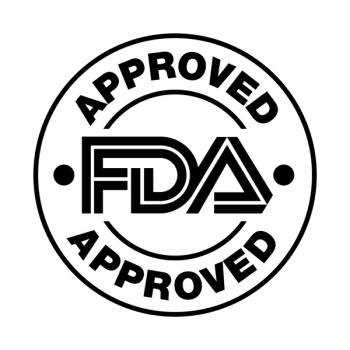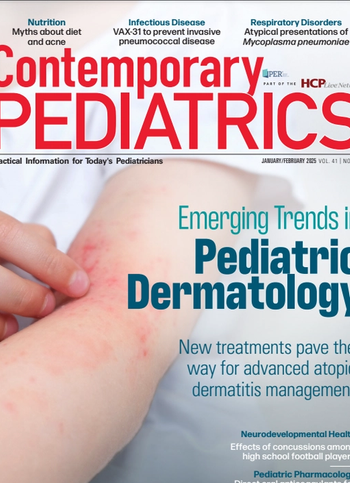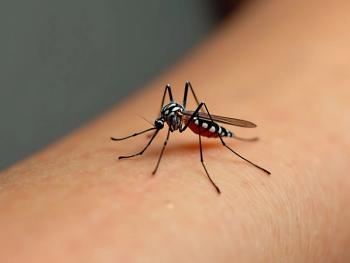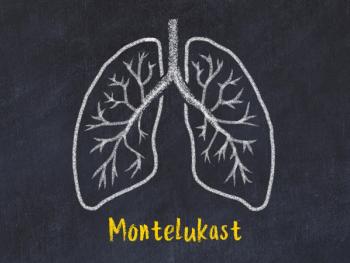
A recap of the FDA submissions and regulatory decisions in pediatrics from January 2025.

A recap of the FDA submissions and regulatory decisions in pediatrics from January 2025.

"I’m all for reducing opioids, especially in neonates, for whom we are unsure of long-term adverse effects," stated Jon Matthew Farber, MD.

The primary and all key secondary endpoints were met compared to cream vehicle in the phase 3 DELTA TEEN trial.

Application submission is based on positive phase 3 data that demonstrated improvement in patients with type 2 and 3 SMA receiving current standard of care.

As a biosimilar to Actemra, tocilizumab-anoh in both IV and SC formulation is approved to treat rheumatoid arthritis, pJIA, sJIA, COVID-19, and giant cell arteritis.

Get caught up with Contemporary Pediatrics! This list helps you navigate our top stories from the week, all in one place.

AI-assisted software improves clinicians' detection of congenital heart defects in prenatal ultrasounds, enhancing accuracy, confidence, and speed, according to a study presented at SMFM's Annual Pregnancy Meeting.

The past year saw a number of approvals adding to the toolbox for atopic dermatitis, including new formulations that work in new mechanisms.

According to a new study, racial and ethnic disparities were evident when counseling on nutrition, lifestyle, and weight among children with high blood pressure measurements.

Tina Tan, MD, FAAP, FIDSA, FPIDS, discusses the severity of the current respiratory virus season and stresses the importance of vaccinations to protect against influenza, COVID-19, RSV, and more.

"My takeaway is that if medicine is needed, stimulants will be my first choice in this age group, regardless of whether the ADHD coexists with ASD."

Can you diagnose this patient?

Editor-in-chief Tina Tan, MD, FAAP, FIDSA, FPIDS, highlights the January/February, 2025, issue of Contemporary Pediatrics.

Nurse practitioner Donna Hallas, PhD, PPCNP-BC, CPNP, PMHS, FAANP, FAAN underscores how critical simple, but factual, conversations can be with parents when it comes to pediatric care.

A study found that 2 weeks of maternal bed rest significantly increases fetal weight and growth metrics in small for gestational age fetuses.

The patient had increased her vape use recently, but did not disclose when she started, or how much she vaped.

Swedish study highlights challenges in managing pain for preterm infants, revealing disparities in pain treatment and assessment across neonatal care.

From 1999 to 2022, a 24.2% decrease in infant mortality was observed in the US, however, SUID mortality rates increased by nearly 12% from 2020 to 2022.

The higher dose regimen of nusinersen comprises a more rapid loading regimen, two 50 mg doses 14 days apart, and higher maintenance regimen, 28 mg, every 4 months.

Based on recent reports, norovirus outbreaks in the 2024-2025 seasonal year is above the range reported from the 2012-2020 and 2021-2024 seasonal years.

Already approved in those aged 18 and older in the United States, Valneva has submitted label extension applications to the FDA for IXCHIQ use in adolescents aged 12 to 17 years.

Detectable TTE in children's urine were 'significantly higher' in homes with reported in-home cannabis smoking.

During the current cold and flu season, children have a higher risk of getting sick. The AAP has release tips and reminders for parents to help keep children comfortable and healthy.

Eligible schools have the opportunity to receive 2 cartons of epinephrine nasal spray for use in emergency situations to treat type I allergic reactions, including anaphylaxis.

"In aggregation with other robust observational studies, these results can inform the management of asthma and allergic rhinitis in this patient group," wrote the study authors.

"The greatest risk reductions were demonstrated in those who experienced obesity remission during childhood," stated study authors.

Robert Frenck, MD, offers several practical tips to use when discussing pediatric vaccination among vaccine-hesitant parents.

Principal investigator Lewis Romer, MD, of Johns Hopkins Medicine joined us to discuss the actively-recruiting MoD PAH trial, and explains the role the pediatrician can play in care and recruitment.

Get caught up with Contemporary Pediatrics! This list helps you navigate our top stories from the week, all in one place.

Susan Carnell, PhD, highlights the nuanced relationship between social media use and binge eating in adolescents, noting the importance of addressing addictive behaviors and seeking support when needed.